


JOHANN CHRISTOPH FRIEDRICH VON SCHILLER 1759 -
(G2, G3a, G3b, G3c)
xxxxxFriedrich von Schiller, one of Germany’s greatest poets and dramatists, began by producing a number of Sturm und Drang plays, including his first major success, The Robbers, in 1782. This, like many of his works, espoused the cause of political and individual freedom. He wrote a number of ballads and poems, notably his Ode to Joy, later immortalised by the German composer Ludwig van Beethoven in his Ninth Symphony. His major works were written in the ten years following his close friendship with Johann Wolfgang Goethe, beginning in 1794. To this period belong his classical dramas Wallenstein (about the Thirty Years’ War), Maria Stuart, The Maid of Orleans, and William Tell. His powerful rhetoric in these works, and the noble ideals he thereby inspired, have seldom been equalled. Apart from literature, Schiller also wrote historical works, including one about the Thirty Years’ War, and produced philosophical treatises and poems based on works by Immanuel Kant. As we shall see, Schiller also played a vital role in persuading his friend Goethe to resume work on his masterpiece Faust.
Including:
Friedrich Holderlin
and Friedrich von
Hardenberg (Novalis)

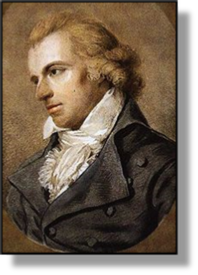 xxxxxIt was in 1794 that the German dramatist, poet and historian Johann Christoph Friedrich von Schiller began his close friendship with his fellow countryman, the literary giant Johann Wolfgang Goethe. The ten years that followed proved to be his most productive and successful. He first came to prominence as a dramatist with his Sturm und Drang plays, and much of his work, particularly in his early days, was written in the cause of political freedom. Later in his career, as in the case of Goethe, his works took on a more classical and historical approach, as can be seen in his dramas Wallenstein, Maria Stuart, The Maid of Orleans (Joan of Arc) and William Tell, all produced at the turn of the century.
xxxxxIt was in 1794 that the German dramatist, poet and historian Johann Christoph Friedrich von Schiller began his close friendship with his fellow countryman, the literary giant Johann Wolfgang Goethe. The ten years that followed proved to be his most productive and successful. He first came to prominence as a dramatist with his Sturm und Drang plays, and much of his work, particularly in his early days, was written in the cause of political freedom. Later in his career, as in the case of Goethe, his works took on a more classical and historical approach, as can be seen in his dramas Wallenstein, Maria Stuart, The Maid of Orleans (Joan of Arc) and William Tell, all produced at the turn of the century.
xxxxxHe was born in Marbach, Württemberg, and, as the son of an army officer, was sent to a military academy at the age of 14 to study law and medicine. He was not happy with the harshness of army life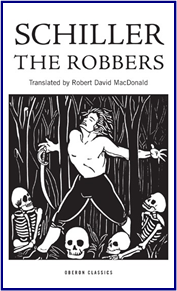 , however, and was anxious to pursue a literary career. His opportunity came in 1780, when he was appointed an assistant medical officer to a military regiment stationed at Stuttgart. While there he completed his first play, The Robbers, a violent tragedy which called for political freedom, and included a powerful attack upon corruption in high places. It was given its first performance at Mannheim in January 1782, and was an instant success with the public, though not with the authorities. On his return to his regiment, Schiller was given a fortnight’s detention for being absent without leave, and, more to the point, banned from producing any more plays. He promptly escaped, and virtually spent the next ten years on the run. He first returned to Mannheim where he produced two more highly successful plays, his first historical drama Fiesco and his tragedy Cabal and Love.
, however, and was anxious to pursue a literary career. His opportunity came in 1780, when he was appointed an assistant medical officer to a military regiment stationed at Stuttgart. While there he completed his first play, The Robbers, a violent tragedy which called for political freedom, and included a powerful attack upon corruption in high places. It was given its first performance at Mannheim in January 1782, and was an instant success with the public, though not with the authorities. On his return to his regiment, Schiller was given a fortnight’s detention for being absent without leave, and, more to the point, banned from producing any more plays. He promptly escaped, and virtually spent the next ten years on the run. He first returned to Mannheim where he produced two more highly successful plays, his first historical drama Fiesco and his tragedy Cabal and Love.
xxxxxIn 1785, being forced to move on, and short of cash, he settled in Leipzig with the help of some friends. It was here that he produced two novels, and completed his first major poetic drama, the idealistic Don Carlos. Set in Spain during the height of the Inquisition and again taking as its theme the fight against political oppression, it was published in book form in 1787. Written in a more classical style and with a somewhat lengthy and complicated plot, this blank verse drama did not quite meet with the success he had expected.
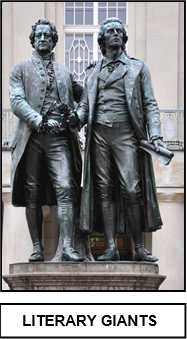
xxxxxDisillusioned with his literary efforts, in 1788 Schiller turned his hand to writing history and produced an account of the successful revolt of the United Netherlands against Spanish rule. It was this work, in fact, not his poetry or drama, which first attracted Goethe, and it was largely because of his good offices that Schiller was appointed professor of history at Jena university in 1790. It was here that he began his history of the Thirty Years’ War, completed in 1793 after resigning his professorship because of ill-
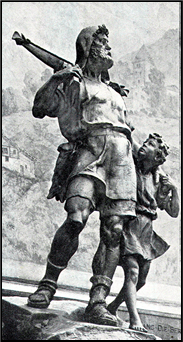 xxxxxAnd, more than anything, his friendship with Goethe brought him back to pure poetry. To the late 1790s belong his two profoundly idealistic poems -
xxxxxAnd, more than anything, his friendship with Goethe brought him back to pure poetry. To the late 1790s belong his two profoundly idealistic poems -
xxxxxQuite apart from his contributions as an historian and a philosopher -

xxxxxIncidentally, Schiller’s Ode to Joy, written in 1785, was later immortalized by the German composer Ludwig van Beethoven. His Ninth Symphony, considered to be one of his greatest works, ends in a movement which incorporates a choral setting of this poem. In the late 20th century this choral work was adopted as the anthem of the European Union, formed in 1967.
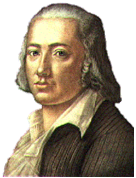
xxxxxDuring his career, Schiller befriended the German lyric poet Friedrich Holderlin (1770-
xxxxxAmong his poems were Menon’s Lament for Diotima, Bread and Wine, and his apocalyptic work Patmos. His lyrical novel, Hyperion, begun in 1797, tells the story of a disillusioned patriot fighting for Greek independence. Following the sudden end to a love affair in 1798, and a return to a life of poverty, he became progressively disturbed mentally, and ceased to compose after 1806. Apart from Schiller, he was also a friend of the two German philosophers Hegel and Schelling, whom he met while studying at Tubingen.
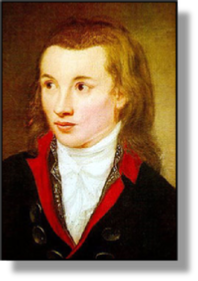
xxxxxAnd also deserving a mention here is the German romantic poet Friedrich von Hardenberg (1772-
xxxxxIn the struggle to overcome his grief Novalis turned to the writing of poetry, and his songs and poems became for him a release from sorrow, and the means to a spiritual awakening, a new religious vision. Freeing his feelings from material things, he felt united with his beloved within a spiritual world. In particular, his Hymns to the Night, a group of six related poems of praise and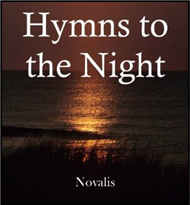 religious devotion, are beautiful in their lyricism and -
religious devotion, are beautiful in their lyricism and -
xxxxxIn 1799 Novalis returned to work at the government salt mines at Weissenfels, and in December 1800 he was appointed magistrate for the district of Thuringia. By this time, however, he was suffering badly from tuberculosis. He died of this illness in March the following year, aged 28, and was buried in the cemetery at Weissenfels. During his brief career he met the German writers Goethe and Herder while on a visit to Weimar.
Acknowledgements
Schiller: by the German painter Ludovike Simanowiz (1759-
G3b-


